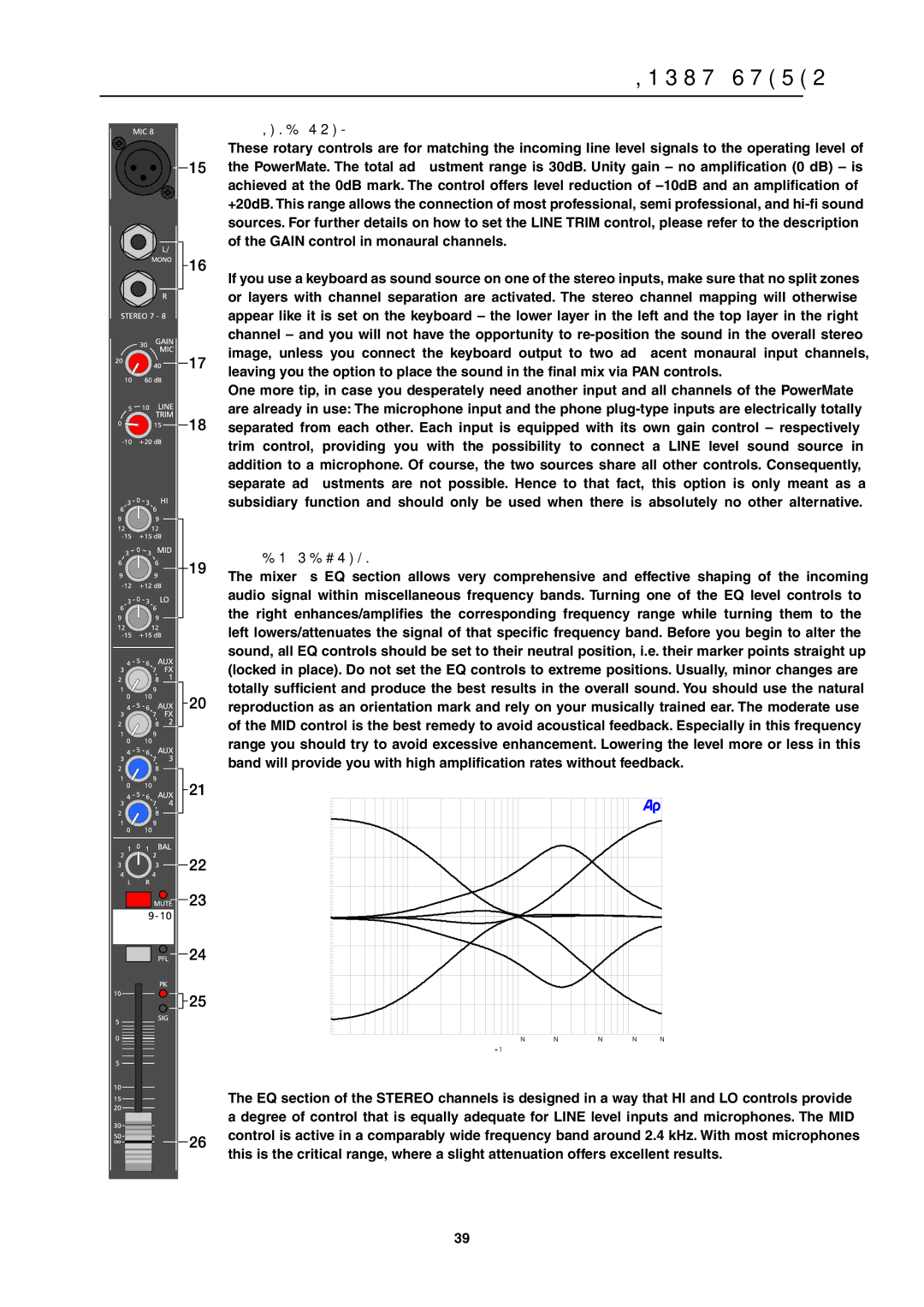
INPUT STEREO
18. LINE TRIM
These rotary controls are for matching the incoming line level signals to the operating level of the PowerMate. The total adjustment range is 30dB. Unity gain – no amplification (0 dB) – is achieved at the 0dB mark. The control offers level reduction of
If you use a keyboard as sound source on one of the stereo inputs, make sure that no split zones or layers with channel separation are activated. The stereo channel mapping will otherwise appear like it is set on the keyboard – the lower layer in the left and the top layer in the right channel – and you will not have the opportunity to
One more tip, in case you desperately need another input and all channels of the PowerMate are already in use: The microphone input and the phone
19. EQ SECTION
The mixer’s EQ section allows very comprehensive and effective shaping of the incoming audio signal within miscellaneous frequency bands. Turning one of the EQ level controls to the right enhances/amplifies the corresponding frequency range while turning them to the left lowers/attenuates the signal of that specific frequency band. Before you begin to alter the sound, all EQ controls should be set to their neutral position, i.e. their marker points straight up (locked in place). Do not set the EQ controls to extreme positions. Usually, minor changes are totally sufficient and produce the best results in the overall sound. You should use the natural reproduction as an orientation mark and rely on your musically trained ear. The moderate use of the MID control is the best remedy to avoid acoustical feedback. Especially in this frequency range you should try to avoid excessive enhancement. Lowering the level more or less in this band will provide you with high amplification rates without feedback.
+20 |
|
|
|
|
|
|
|
|
|
+15 |
|
|
|
|
|
|
|
|
|
+10 |
|
|
|
|
|
|
|
|
|
+5 |
|
|
|
|
|
|
|
|
|
+0 |
|
|
|
|
|
|
|
|
|
|
|
|
|
|
|
|
|
| |
|
|
|
|
|
|
|
|
| |
|
|
|
|
|
|
|
|
| |
50 | 100 | 200 | 500 | 1k | 2k | 5k | 10k | 20k | |
20 | |||||||||
|
|
|
|
| Hz |
|
|
|
|
The EQ section of the STEREO channels is designed in a way that HI and LO controls provide a degree of control that is equally adequate for LINE level inputs and microphones. The MID control is active in a comparably wide frequency band around 2.4 kHz. With most microphones this is the critical range, where a slight attenuation offers excellent results.
39
